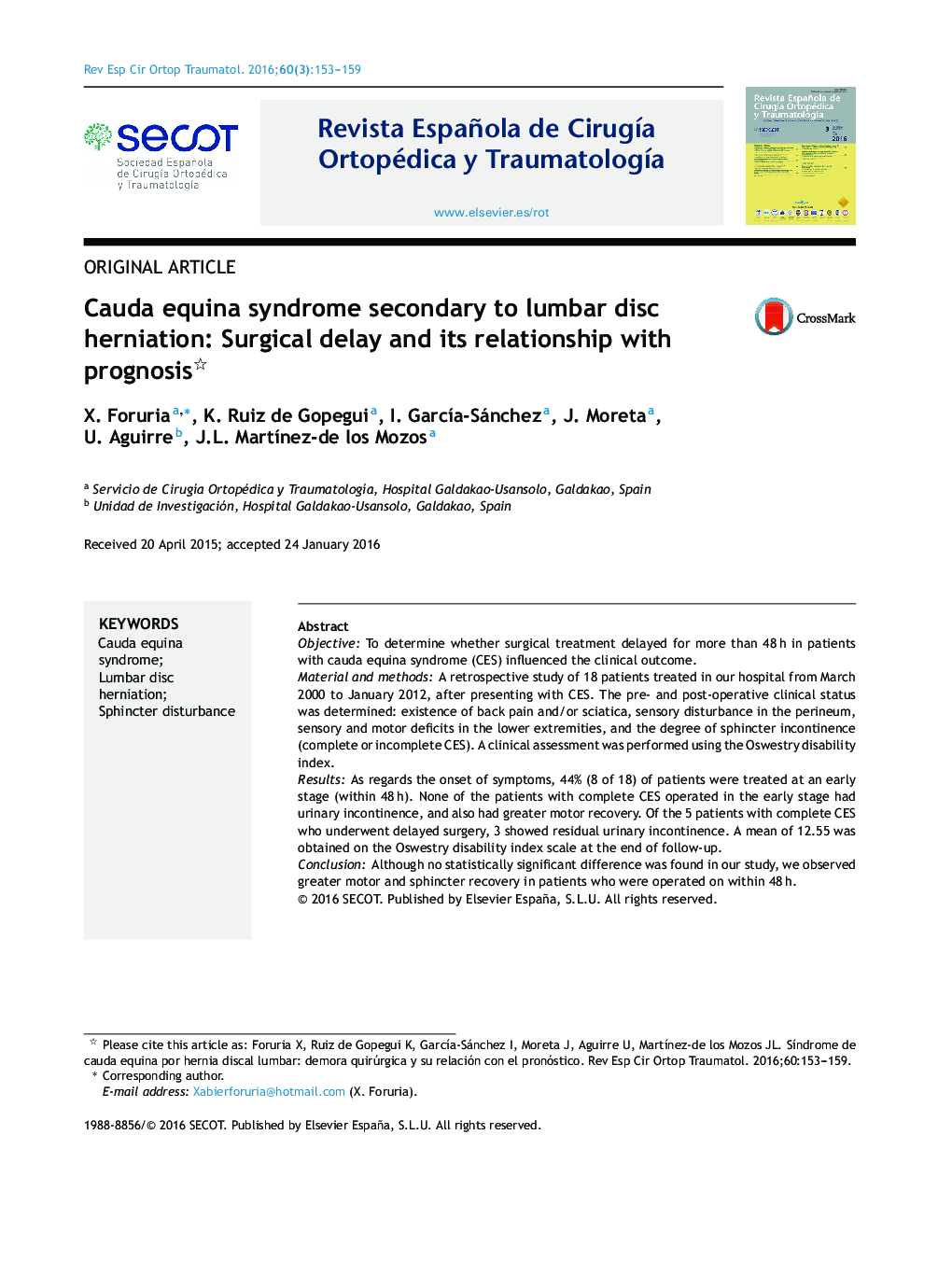| کد مقاله | کد نشریه | سال انتشار | مقاله انگلیسی | نسخه تمام متن |
|---|---|---|---|---|
| 4087044 | 1268010 | 2016 | 7 صفحه PDF | دانلود رایگان |

ObjectiveTo determine whether surgical treatment delayed for more than 48 h in patients with cauda equina syndrome (CES) influenced the clinical outcome.Material and methodsA retrospective study of 18 patients treated in our hospital from March 2000 to January 2012, after presenting with CES. The pre- and post-operative clinical status was determined: existence of back pain and/or sciatica, sensory disturbance in the perineum, sensory and motor deficits in the lower extremities, and the degree of sphincter incontinence (complete or incomplete CES). A clinical assessment was performed using the Oswestry disability index.ResultsAs regards the onset of symptoms, 44% (8 of 18) of patients were treated at an early stage (within 48 h). None of the patients with complete CES operated in the early stage had urinary incontinence, and also had greater motor recovery. Of the 5 patients with complete CES who underwent delayed surgery, 3 showed residual urinary incontinence. A mean of 12.55 was obtained on the Oswestry disability index scale at the end of follow-up.ConclusionAlthough no statistically significant difference was found in our study, we observed greater motor and sphincter recovery in patients who were operated on within 48 h.
ResumenObjetivoConstatar si la demora en más de 48 h en el tratamiento quirúrgico de los pacientes con síndrome de cauda equina (SCE) influyó en el resultado clínico de nuestros pacientes.Material y métodosEstudio retrospectivo de 18 pacientes intervenidos en nuestro centro desde marzo de 2000 a enero de 2012, tras presentar SCE. Se recogió la situación clínica pre- y postoperatoria: existencia de dolor lumbar y/o ciático, alteración sensitiva en periné, déficit motor y sensitivo en extremidades inferiores y el grado de incontinencia esfinteriana (SCE completo o incompleto). Se realizó una valoración mediante el índice de discapacidad de Oswestry.ResultadosTeniendo en cuenta el inicio de los síntomas, el 44% (8 de 18) de los pacientes se intervinieron de forma precoz (menos de 48 h). Ninguno de los pacientes con SCE completo intervenidos precozmente tuvieron incontinencia urinaria residual, presentando además mayor grado de recuperación motora. De los 5 pacientes con SCE completo intervenidos de forma tardía (más de 48 h), 3 continuaron con incontinencia urinaria residual. Al final del seguimiento se obtuvo una media de 12,55 en las escala de discapacidad de Oswestry.ConclusiónAunque no se han encontrado diferencias estadísticamente significativas, en nuestra serie hemos observado mayor recuperación motora y esfinteriana en los pacientes que fueron intervenidos antes de las 48 h.
Journal: Revista Española de Cirugía Ortopédica y Traumatología (English Edition) - Volume 60, Issue 3, May–June 2016, Pages 153–159